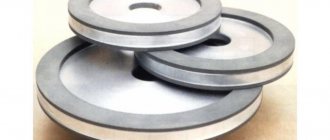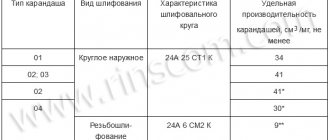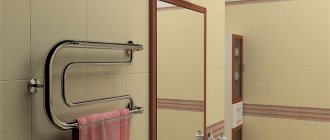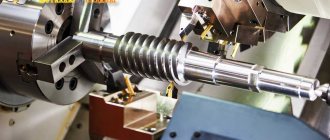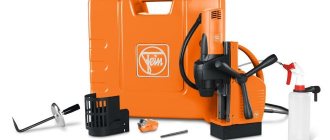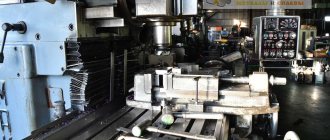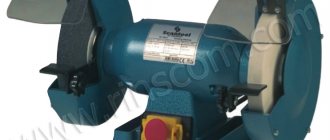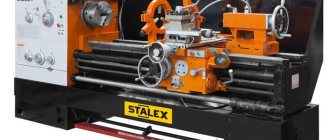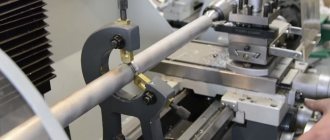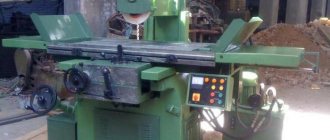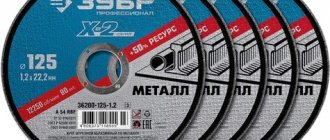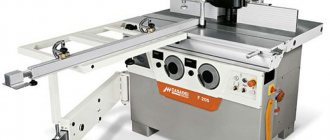Grinding the surfaces of parts made of various materials is understood as the main initial operation for removing burrs, nicks remaining after the operation of various metalworking machines, and sharpening knives. In order to ensure high-quality processing, it is necessary to select a grinding wheel with characteristics that correspond to the type and size of the part undergoing this procedure.
General information
An abrasive grinding tool is actually a type of cutting metalworking equipment. The cutting is carried out using a large number of solid particles. There are a lot of types of grinding wheels, some of which are known only to those who have encountered them. For example, in the aircraft and space industries, special tools are used. However, it does the same job as other similar devices.
There is a different type of grinding wheel for different coatings. With their help, steel, cast iron products, alloys of non-ferrous metals and forged accessories can be processed. There is special equipment for working with glass, ceramics and brick. The most common abrasive tools currently in use are:
- In circles.
- Heads.
- Cutters or cutters.
- In segments.
- Bar devices.
After processing with such equipment, the remaining roughness is determined by classes A, B and AA. The best grinding quality, designated by the letters AA, is achieved on high-precision machines.
Classification of sanding tools
Graduation of circles by type occurs in two ways. The first of them is determined by two official documents: the old Soviet GOST 2424-83 “Grinding wheels: technical conditions” and the modern “Grinding wheel: GOST R 52781-007”. However, what is contained in them will be difficult to understand for most untrained users.
For this, there is a second, popular specification of grinding tools:
- Velcro devices get their name due to the ability to cling to device supports due to Velcro fabric inserts. These are universal circles that are used in the absence of special equipment. They are marked with different colors to indicate the grinding grain they contain. The most common is brown, suitable for working with wood and metals. Blue - for processing stainless steel, white for varnished and putty surfaces, black can be used for processing minerals.
- Fan-shaped circles are highly elastic and adapt well to any surface; they are called petal circles. Field of application: grinding pipes, wood products and shaped parts. Welding seams and burrs are removed using especially strong abrasive wheels for metal.
- A product for the production of which vulcanized paper assembled in several layers is used is called a fiber grinding wheel. This tool can be used to clean stainless steel, wood, and steel.
- Diamond wheels are used for fine grinding and are not very durable.
Characteristics and features of diamond wheels for sharpening cutters
Diamond wheels for sharpening lathe cutters and other cutting tools, depending on the profile shape and type of abrasive, are specifically suitable for the following operations:
- With the shape of a straight flat profile of grade 1A1 - for processing cylindrical products, flat parts and sharpening cutters made of hard structure alloys.
- With the shape of a disc profile 12A2-20* - for sharpening the front part of a tool that has many blades made of hard structure alloys, cutters consisting of assembly units or all-metal, worm-type cutters, circular saws.
- With cup profile shape 12A2-45* - for working with the back and front surfaces of carbide cutters and grinding ends.
- With the shape of a 12R4 disc profile - for carrying out finishing and sharpening operations, as is the case with a 12A2-20* disc.
- With a straight flat profile shape and grooves of grade 9A3 arranged on both sides - for working with cutters made of hard alloys, structural elements of machines, semiconductor structure materials, and measuring tools.
- With the shape of a flat convex-semicircular profile of grade 1FF1 - for sharpening and grinding products made of hard alloys.
- With a flat conical profile on both sides for working with shaped surfaces and threads.
It should be said about the concentration of the diamond component, which has an impact on the sharpening mode. With a 100% performance, the wheels have high productivity and are able to withstand harsh processing conditions without being subject to deformation. With a 50% indicator, discs are most often used for any type of work. At 20% - finishing wheels for manual tool feeding.
Product quality characteristics
There are a lot of different parameters by which such products are classified. There are even more types of markings for abrasive wheels due to the fact that there are many different combinations of these properties. The main parameters of abrasive wheels for grinding machines are:
- Grit index.
- Type of abrasive material.
- Binder.
- Dimensions and shape.
- Hardness of the grinding material.
- Working speed.
A circle with the appropriate indicators is selected for use, which are indicated in the markings on the product itself.
Fixture Grit
This is the most significant characteristic. Its value determines how smoothly the sample will be polished. In addition, the size of wear, productivity, and the thickness of the layer removed per cycle also largely depend on this indicator. The smaller the grain of the tool, the higher the cleanliness of the processing. However, the speed of work with such granularity is reduced. In addition, such devices often cause burns to the part.
The old standard defines the grain size in microns, and is now denoted by the letter F with a number. The higher the digital component, the less grain. All these indicators are summarized in the table of grinding wheel grain size.
Materials for production
Like all characteristics, the requirements for the material from which grinding wheels are made correspond to GOST. Minimum conditions are wear resistance, low heat transfer, hard surface. Based on these conditions, the abrasive tool is made from the following material:
- A substance having a base of aluminum oxide (Al2O3) is called electrocorundum with a bauxite binder. GOST 28818 allows the addition of potassium oxide to increase hardness. This allows you to maintain the original properties when the temperature increases under intensive work conditions. Such circles are marked as follows: 12A - 15A - ordinary, 22A - 25A - increased hardness.
- The same material with a carbide base includes chrome, titanium, zirconium, and silicon compounds for working with hardened metals. Silicon carbide (52C - 65C) is needed to resist temperature changes when cooling the workpiece. Such products are marked with the letter A and numbers from 38 for zirconium to 95 for titanium.
- Rounded grains of spherocorundum are obtained by blowing liquid aluminum oxide, are characterized by increased hardness and are used for abrasive processing of carbide products. They are designated by the letters ES.
- The monocrystalline structure of monocorundum is the reason for the durability of wheels made from it. Due to the complexity of the production technology, they are very expensive. You can recognize them by markings 43A, 44A and 45A.
Application of binding materials
For a tight arrangement and protection from destruction, special substances are used in grinding wheels. Their quality, variety, and even distribution affect all the characteristics of abrasive tools. And also the presence of these materials shows the ability to independently sharpen crumbled sections of the grinding stone. If the binding component does not correspond to the surface being processed, the tool loses its main property, wear increases, grains that have not yet been worked are chipped, and burning and clogging appear.
Organic and inorganic binders can be used as binding elements. The first represent ceramic and silicate materials, the second - bakelite and vulcanite.
The following materials are used in a ceramic bond: refractory clay, quartz and spar. They are strong, durable, with a stable cutting edge. Tools on this basis can be cooled with special emulsions. Circles of small thickness are destroyed by lateral impact. Designated K0, K1, K3 and so on. In their production, silicon carbide or electrocorundum grains are used. They grind well in all ways, except for cutting and use in narrow grooves.
Sanding wheel grit
When purchasing an emery grinding wheel for their machines, consumers pay attention to such a characteristic parameter as grain size. It can take the following values in the standard version - 8, 12, 16, 25, 40. It is clear that 8 are products with the smallest grains, and 40 are, accordingly, the largest.
The choice of grain size should be carried out exclusively professionally. Otherwise, either the sharpening work will be done poorly, or the emery wheel itself will not last long. Fine grit is great for jewelry sharpening, while coarse grit is great for heavy, large tools that do not require high precision.
There is another important parameter that concerns grain - its resistance to abrasion. There are so-called medium-soft products (they are labeled SM), as well as medium-hard ones (respectively, ST). The first option in our country, and throughout the world, has become quite widespread. This is due to the relatively low cost of the product, as well as acceptable characteristics. It works for a long time even under fairly heavy loads. As for medium-hard grain, it is even more resistant to mechanical stress, including abrasion. However, such a product costs many times more, which significantly reduces the economic feasibility of the purchase.
From this perspective, we can consider some examples of product labeling and their appropriateness for use in a given situation. So, for example, an emery wheel marked 150x8x32 12-CM is often used to sharpen skates. What does it mean?
- The disc has a medium-soft grain, which is relatively cheap and allows for high-quality sharpening.
- The grain size is 12-H - 12 microns in diameter, if we take the average.
- 32 mm is the fitting diameter, which is standard for many equipment.
- 8 mm is the thickness of the product itself. This is a very small indicator, which does not ensure structural strength when working with a large tool under high loads, but it is quite suitable for the intended purpose.
- 150 diameter sanding wheel.
Let's look at another small example. For everyday life and production, abrasives 150x20x32 25-CM are installed on emery surfaces. In this example, in comparison with the previous one, the width of the product is increased to 20 mm, and the grain diameter is increased to 25 microns. In fact, this turns out to be a fairly universal machine that will allow you to work not only with small tools, such as scissors, knives, screwdrivers, but also with fairly large devices, such as axes and some saws.
Safety at work
Operations involving grinding and cutting equipment have several hazards. This is the rotation of the device, the possibility of destruction of the disk while moving, the threat of touching rotating equipment. To maintain health, you need to fulfill the following requirements:
- All work on electrical grinding equipment begins after checking the cable insulation, the presence of grounding, and the serviceability of the emergency shutdown button.
- Make sure that the wheels are in good condition: there are no cracks, chips, wear.
- Check the operation of the supply and exhaust ventilation. Overalls must be tucked in, long hair must be hidden under a cap.
- Before starting grinding, wait 2-3 minutes while the machine is running idle. This will help identify hidden defects.
- While working, pay full attention to the operation being performed.
- Do not work without protective glasses or masks.
- Replacing abrasive wheels is only possible when the equipment is switched off.
- All rotating mechanisms are protected by casings, and the circles themselves are protected by transparent screens. When lifting these guards, the operation of the machine must be blocked by switches.
- When not working, the shields must be raised.
Modern grinding tools and machines greatly facilitate human work. And the correct choice of equipment will allow you to perform cleaning operations with the maximum level of cleanliness.
Originally posted 2018-04-06 09:22:34.
